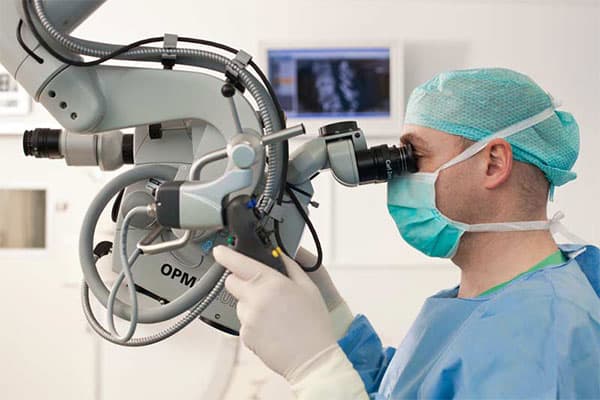Course microlaminectomy / decompression surgery
By the so-called decompression, the thickened and protruding bone and ligament formations are removed, and, thus, the nomal diameter of the spinal canal is reconstructed. Because decompression surgery is a minimally invasive operation even suitable for risk patients, it can be undergone in local anaesthesia. However, in most cases, a very gentle general anaesthesia is used.
By use of of a microscope and microscopic fraises, similar to those dentists use, the protruding bone is removed millimeter for millimeter until the nerves have enough space. Depending on the extent of stenosis, it is practiced from one or both sides. Thereby, the stability of spine remains. A posterior cut of 3-5 cm length is necessary for one level. If there is an additional instability (listhesis), it is possible to stabilize the vertebrae with a synthetic ligament, which is well-tolerated and does not burden the body. In both cases, patients can stand up and walk 2 hours after surgery, and usually they can go home 2 days later.



